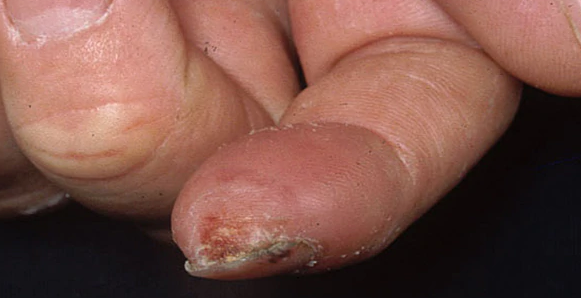
Everyone hates frostbites. It is no question. And unfortunately, we always have to deal with it every winter season.
The Mayo Clinic described frostbite as a skin injury caused by a freezing temperature that can make your skin turn red, numb out, then eventually harden and turn pale. It usually occurs on the fingers and on the face, since those are often exposed to the cold weather. However, in some instances, frostbites can still occur on covered skin.
Frostnip, a milder form of frostbite, does not cause permanent skin damage. But frostbites always require medical attention, especially the severe ones that can cause infection and nerve damage.
Below are the things suggested by dermatologists to protect yourself from frostbites or its possible complications.
1. Choose appropriate clothes
Dermatologists suggested layered clothes made from light and loose fabric. Loose and light layers trap warm air inside your body.
The first layer should be made of materials that absorb moisture away from your body. The next layer should be capable of trapping the heat like wool and fleece. Lastly, the outer layers should be windproof and waterproof to protect you against the wind and snow.
For your feet and toes, they suggested wearing two pairs - a moisture-wicking for the innermost, and wool or wool-blended for the outer layer. Your boots should also be insulating and waterproof. Make sure it does not feel tight too.
Insulated gloves can be given to your hands.
If you needed to be outside during winter, wear heavy wool or fleece hat. Face mask or scarf can trap the air you breathe out and keeps your nose and face warm.
Lastly, always secure your clothes. Do not use wet garments. Do not allow it the snow to enter the inner layers too.
2. Keep yourself hydrated
Dehydration increases the risk of developing frostbites. So even if you are not thirsty, drink water before going outside. You might also bring bottled water or a sports drink. Lastly, stay away from alcohol as it can increase the risk too.
3. Look out for the symptoms
Early detection has always been proven effective for treatment. This includes frostbites. First signs include coldness and prickling feeling, followed by redness of skin and numbness. If you are starting to feel it, head inside immediately to keep yourself warm.
4. Apply first aid treatment
If you or someone with you are suffering from frostbites, apply first aid immediately. You can start first by rewarming. Get the person secured in a warm place and take off any wet clothing. Then, pour down warm (not hot) water on the infected areas until it appears warm and red. If no water available, you can breathe out on that area. Then, once it is warm enough, cover it with dry and sterile bondage.
Doctors highly suggested putting the areas on direct heat like heating pads or near fires. Do not rub it too. And lastly, never exposed the skin again to cold as it will worsen the frostbites.
5. Seek medical attention immediately
If the frostbite is bad, immediately bring the patient to the doctor. The doctor will give medication to ease the pain and rehydrate the patient. Tetanus shot might also be administered.
In rare cases, the patient might be hospitalized. Amputation might also be performed on really severe cases to prevent gangrene, a situation where the muscle tissues died due to loss of blood supply.
© 2025 NatureWorldNews.com All rights reserved. Do not reproduce without permission.





